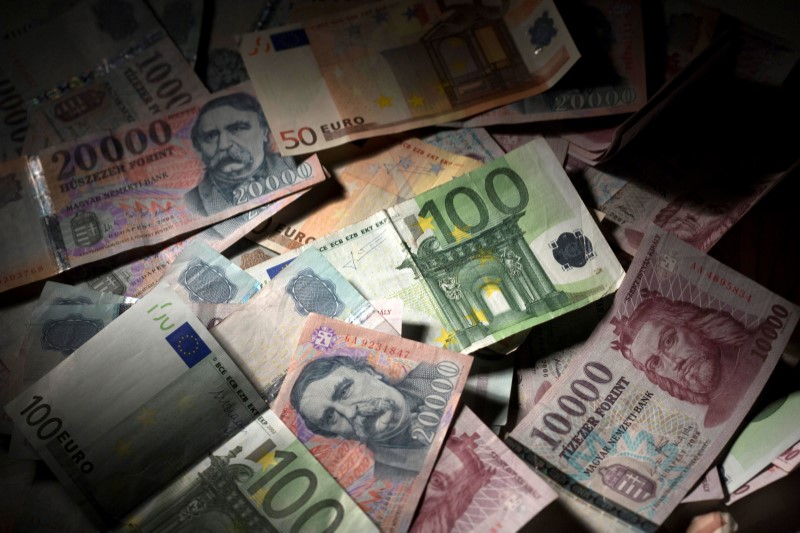By Sandor Peto
BUDAPEST (Reuters) - The forint and the zloty are seen mostly recovering from this week's record lows against the euro in the next year, after a dollar (DXY) rally caused a sell-off in emerging markets.
The median forecasts of 50 economists in a July 2-5 Reuters poll showed that the forint (EURHUF=) could firm about 2 percent and the zloty (EURPLN=) about 2.5 percent versus the euro in the next 12 months from their Thursday afternoon levels.
Among Central European currencies, Hungary's forint and the Polish zloty got the biggest hit from the past few months' rally in the dollar (DXY) and U.S. bond yields.
For a graphic on Central European central bank rates click https://reut.rs/2IVKlwb
They fell 5-6 percent against the euro from the end of 2017, with the forint touching record lows at 330.7 early this week, before a partial recovery after the Chinese central bank calmed markets and stopped a weakening of the yuan.
The forint got additional help from growing expectations that the Hungarian central bank (NBH), after abandoning its pledge to keep rates low for years two weeks ago, could consider measures to tackle an increase in inflation risk.
When the forint was falling, some traders did not even rule out an emergency rate hike from the NBH because a weakening increases inflation by boosting the price of imported goods.
Analysts in the poll mostly said that the bank was unlikely to take any monetary tightening measure this month, unless the forint plunges again from Thursday's levels around 323.35.
Ten analysts said an emergency measure before the July 24 meeting was unlikely, and seven said the same about the July meeting, with no participant projecting a move.
ING analysts Peter Virovacz said the bank could rush into tightening only if renewed pressure sharply weakens the forint.
"If we reach 335-ish levels, than from an inflation point of view, NBH needs to take action," he said, adding that cutting liquidity provided by the NBH to banks could be a sufficient first measure, to be followed by an increase in the NBH's overnight deposit rate, now -0.15 percent, if needed.
Other analysts also said these measures were possible in the rest of the year if renewed forint weakness puts the bank's 2-4 percent inflation target at risk.
Most respondents refused to make projections about the NBH's likely policies in the next few months, or about the likely bottom of the forint, adding that the currency's path would be key to NBH policy tightness, and it was uncertain.
The key global uncertainties are the impacts of a global trade war on economic growth, the level of crude oil prices, and whether the dollar continues to channel liquidity away from other markets, analysts said.
A separate Reuters poll of analysts showed the dollar was not expected to firm further from levels around 1.17 against the euro. It was seen firming to 1.16 by the end of July, but retreating to 1.22 in the next 12 months.
"I do not understand why we should get into a bad spiral while Hungary has an external (trade and current account) surplus," said Gergely Suppan, an analyst at Takarekbank in Budapest. "If the forint recovers, the bank will not have to do anything."
According to the median forecasts in the poll, the forint is seen firming to 320 by the end of the year and to 317.25 by the end of June 2019, a weaker 12-month level than the 312 forecast in a similar survey a month ago.
The zloty, which traded around 4.355 against the euro on Thursday, is expected to gradually firm to 4.25 in the next 12 months, a weaker level than 4.2 predicted a month ago.
The recent sell-off also weakened the Czech crown (EURCZK=), but analysts kept their 24.85 one-year forecast for the currency unchanged as the Czech central bank is expected to continue to increase its interest rates.
